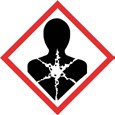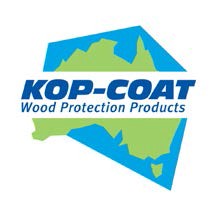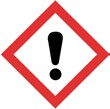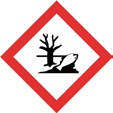Company logo etc




Safety Data Sheet
Timbertreat™ A Azole
Insecticide/Fungicide Wood
Preservative RTU
1. IDENTIFICATION
Product Name:
Timbertreat™ A Azole Insecticide/Fungicide
Wood Preservative RTU
Other Names:
Water based azole treating solution including penetration tracer, stabilizer and mouldicide.
Aqueous timber preservative treating solution for use in industrial timber treatment facility.
Supplier:
KOP-COAT AUSTRALIA PTY LIMITED
Address:
Unit 1, 2 Park Road Ryalmere, NSW 2116, Australia.
Telephone:
(02) 9638 2755 (business hours only)
Emergency phone:
KOP-COAT Australia 1800 023385
POISON INFORMATION CENTRE (Australia) 131126
2. HAZARDS IDENTIFICATION
Product is hazardous according to the Australian NOHSC Approved Criteria for Classifying
Hazardous Substances [NOHSC:1008 (2004)].
Hazardous classification descriptions according to GHS 5th edition, 2013.
Classifications:
Acute toxicity: Oral Category 5
Skin category: Category 3
Eye category: Category 2A
Respiratory sensitization: Category 1
Skin sensitization: Category 1
Reproductive toxicity: Category 2 Aquatic toxicity (Acute): Category 2
Signal word:

Timbertreat™ A Azole Insecticide/Fungicide
Wood Preservative RTU
SAFETY DATA SHEET
Hazard Statements :
H303 May be harmful if swallowed.
H316 Causes mild skin irritation.
H317 May cause an allergic skin reaction.
H319 Causes serious eye irritation.
H334 May cause allergy or asthma symptoms or breathing difficulties if inhaled.
H361 Suspected of damaging fertility or the unborn child.
H411 Toxic to aquatic life with long lasting effects.
Prevention Statements:
P201 Obtain special instructions before use. P202 Do not handle until all safety precautions have been read and understood. P261 Avoid breathing mist, vapours or spray. P264 Wash hands thoroughly after handling. P272 Contaminated work clothing should not be allowed out of the workplace.
P273 Avoid release to the environment.
P280 Wear protective clothing, gloves and eye protection. P281 Use personal equipment as required. P285 In case of inadequate ventilation wear respiratory protection( refer AS/NZS1715 and AS/NZS 1716).
Response Statements:
P101 If medical advice is needed, have product container or label at hand.
P312 Call a POISON CENTRE or doctor if you feel unwell.
P308 + P313 If exposed or concerned: Get medical advice.
P302 + P352 IF ON SKIN: Wash with plenty of soap and water.
P333 + P313 If skin irritation or rash occurs: Get medical advice.
P363 Wash contaminated clothing before re-use.
P304 + P341 IF INHALED: If breathing is difficult, remove to fresh air and keep at rest in a
position comfortable for breathing.
P342 + P311 If experiencing respiratory symptoms: Call a POISON CENTRE or doctor.
P305 + P351 IF IN EYES: Rinse cautiously with water for several minutes. Remove contact
+P338 lenses, if present and easy to do. Continue rinsing.
P337 + P313 If eye irritation persists: Get medical advice.
P391 Collect spillage.
Storage Statements:
P405 Store locked up.
Disposal Statements:
P501 Dispose of product and containers in accordance with local regulations.
3. COMPOSITION : Information on Ingredients
Chemical Ingredient
Proportion (%)
Disodium octaborate tetrahydrate
2- Butoxyethanol
Dipropylene glycol methyl ether
Octanamide, N,N-dimethyl-
Decanamide, N,N-dimethyl-
Other ingredients
Date of Review:

Timbertreat™ A Azole Insecticide/Fungicide
Wood Preservative RTU
SAFETY DATA SHEET
Product is a complex mixture of a water dilution of Timbertreat™ Azole Insecticide/Fungicide Wood Preservative and additives including a stabilizer and penetration tracer. Components contributing to the hazardous classification for the mixture are shown in the composition table.
4. FIRST AID MEASURES
For advice, contact Poisons Information Centre (Phone Australia: 131126) or a doctor. Have product label or Safety Data Sheet at hand.
Swallowed:
Do NOT induce vomiting. Rinse mouth thoroughly with water. Get medical immediate advice.
Inhalation:
Move the victim to fresh air immediately and keep warm and at rest until recovered. Get
medical attention if experiencing respiratory problems. Begin artificial respiration, preferably
mouth-to-mouth, if breathing is laboured or has stopped, and get immediate medical
assistance.
Skin Contact:
Remove contaminated clothing. Wash skin with plenty of soap and water. If irritation persists or
rash develops, get medical attention. Launder clothing and clean contaminated equipment
before re-use.
Eye Contact:
Immediately flush the eye continuously with gently flowing water for 15 minutes while holding
the eyelids open. Remove contact lenses, if present and easy to do, after flushing eyes for 5
minutes then continue rinsing. Get medical attention.
First Aid facilities:
Provide eye baths and safety showers close to areas where splashing may occur.
Advice to Physician: Treat symptomatically.
5. FIRE FIGHTING MEASURES
Allow trained personnel to attend a fire in progress, providing fire-fighters with this Safety Data Sheet. Prevent extinguishing media from escaping to drains and waterways.
Suitable extinguishing media: Water, carbon dioxide, dry chemical.
Hazards from combustion products: Thermal decomposition may produce toxic fumes.
Precautions for fire fighters and special protective equipment: Self-contained breathing
apparatus with full face-piece and protective clothing. Cool fire exposed containers with water
spray.
6. ACCIDENTAL RELEASE MEASURES
Emergency Procedures:
Prevent fluid from escaping to drains and waterways. Ensure that drain valves are closed at
all times. Clean up and report spills immediately. In event of spillage contaminating a water-
course, notify the appropriate authorities.
Wear appropriate personal protection equipment to prevent skin, eye and respiratory exposure. Wear approved respirator compliant with AS/NZS 1716 where mist or vapours of unknown concentrations may be generated. Self-contained breathing apparatus is recommended.
Date of Review:

Timbertreat™ A Azole Insecticide/Fungicide
Wood Preservative RTU
SAFETY DATA SHEET
Methods and materials for containment
Dyke and contain spilled liquid with sand, earth or other suitable absorbent material, e.g. sand or
soil, and transfer liquid and solids separately to labeled containers that can be sealed for recovery
or disposal.
If large spill, dike and pump into labeled drums or containment vessel for re-use or disposal.
Clean up and report spills immediately. Keep spills out of sewers, drains and open bodies of
water.
7. HANDLING AND STORAGE
Precautions for safe handling: Read label and Safety Data Sheet before use.
Avoid breathing vapour or mists. Avoid contact with skin or eyes. Wash hands after use and
before rest or meal breaks. Observe good personal hygiene practices and recommended
procedures including wearing of personal protection equipment and use in well-ventilated area.
When preparing or using product, or handling freshly treated timber, wear cotton overalls
buttoned to the neck and wrist (or equivalent clothing), elbow-length chemical resistant gloves,
and eye protection.
Conditions for safe storage: Store within a well-ventilated bunded area out of direct sunlight.
Protect from physical damage. Do not contaminate water, food or feed by storage or disposal.
Incompatible materials: None specified.
Other: Changing out of work clothing and showering recommended at the end of each work
shift. Wash work clothes separately from other household clothing.
8. EXPOSURE CONTROLS : PERSONAL PROTECTION
Health Exposure Standards: Workplace Exposure Standards (WES) have been set for
components in this substance.
Dipropylene glycol methyl ether
50 ppm (308 mg/m3)
20 ppm (96.9 mg/m3)
50 ppm (242 mg/m3)
Disodium octaborate tetrahydrate
Biological limit values: None established
Engineering Controls:
Ventilation: Use in well-ventilated area.
Personal Protective Equipment:
Respiratory Protection: Respiratory protection may be necessary under certain use conditions.
Under such conditions, an approved respirator according to local standards, must be worn. Refer
to AS/NZS 1715 and AS/NZS 1716 for types, selection, use and maintenance of respiratory
equipment. Seek expert advice before welding or cutting equipment.
Eye Protection: Use safety goggles or a face-shield where there is a risk of splashing.
Skin/ Body Protection: Wear chemical resistant flexible-type gauntlet gloves, footwear,
chemical resistant apron, and protective clothing, e.g. overalls with long sleeves that can be
buttoned to neck and at wrist, and long pants, when handling product, diluted ready to use
treatment solutions or freshly treated timber.
Date of Review:

Timbertreat™ A Azole Insecticide/Fungicide
Wood Preservative RTU
SAFETY DATA SHEET
9. PHYSICAL AND CHEMICAL PROPERTIES
Property
Typical value
Clear to slight yellowish/brown liquid
Boiling Point/Range 0C
Density g/ml @ 20 0C
1.01 -1.02 typical
Vapour Pressure mm Hg @ 200C
Vapour Density kPa @ 200C
Autoignition Temperature 0C
Explosive Limits in Air %
Solubility in Water
10. STABILITY AND REACTIVITY
Chemical Stability:
Stable under normal conditions.
Conditions to avoid:
Sources of heat and ignition.
Hazardous decomposition products:
Thermal decomposition may produce toxic or harmful
components in smoke.
Hazardous reactions: None specified.
11. TOXICOLOGICAL INFORMATION
Acute Effects:
Ingestion: May be harmful if swallowed in large quantity.
Eye Contact: Causes serious eye irritation with symptoms of discomfort, pain, tearing and
redness.
Skin Contact: Contact with the product may cause irritation with redness and swelling. Prolonged
or repeated contact may result in drying and cracking or skin and an allergic skin reaction.
Inhalation: Irritating to nose, throat and respiratory tract. May cause allergy or asthma symptoms
or breathing difficulties.
Chronic Effects: Animal ingestion studies, at high doses, indicate that borate compounds cause
male reproductive effects in laboratory animals. A human study of occupational exposure to borate
dust showed no adverse effect on reproduction. Borate compounds have been classified as
suspected of damaging fertility or the unborn child.
Other Health Effects Information: Possible adverse effects from repeated or prolonged exposure
by ingestion, inhalation or skin contact. Individuals with pre-existing disease or a history of
ailments involving skin, eye, respiratory tract, liver, kidney and central nervous system, may
be at greater than normal risk of developing adverse effects when exposed to this product.
Toxicological Information:
Active ingredients Propiconazole
Oral, rabbit LD50 1344 mg/kg b.w.
Oral, mouse LD50 1615 mg/kg b.w.
LD50 220 mg/kg b.w.
12. ECOLOGICAL INFORMATION
This product contains components that are highly ecotoxic in the aquatic environment. Do not
Date of Review:
Timbertreat™ A Azole Insecticide/Fungicide
Wood Preservative RTU
SAFETY DATA SHEET
apply directly onto or into water. Do not contaminate water ways, sewers, or drains when disposing of containers, residues or waste.
Ecotoxicological Information:
Rainbow trout, LC50
830 μg/L (0.83 mg/L)
Green algae, EC50
Lemna gibba (alga), EC50
0.1444 mg ai/L (frond number)
Rainbow trout, LC50
Daphnia magna (water flea), LC50 (48h) 4 mg/L
Water flea, LC50 (48h)
Rainbow trout, LC50
Water flea, LC50 (48h)
13. DISPOSAL CONSIDERATIONS
Disposal Methods: Recycle product or washings back through the treatment system whenever
possible. Seek advice before disposing of residues. Consult the relevant local authority for disposal
of sludge or other wastes containing this product.
Special Precautions for Landfill or Incineration: Disposal of this product must comply with any
legislative or regulatory requirements Act for which approval should be sought from the
appropriate Authority.
14. TRANSPORT INFORMATION
Road and Rail Transport
Marine Transport
Air Transport
HAZARDOUS, LIQUID,
HAZARDOUS, LIQUID,
NOS (permethrin,
NOS (permethrin,
Dangerous Goods Segregation
This product if transported off-site is classified as a Dangerous Good, Class 9.
Please consult the Australian Code for the Transport of Dangerous Goods by Road and Rail
(ADG code) for information.
Date of Review:
Timbertreat™ A Azole Insecticide/Fungicide
Wood Preservative RTU
SAFETY DATA SHEET
15. REGULATORY INFORMATION
Country:
Inventory:
Australian Inventory of Chemical Substances
Components listed
APVMA Approval number:
69683/61337 (for Preservative concentrate)
Hazardous classifications: Hazardous classification descriptions according to GHS 5th edition,
2013.
16. OTHER INFORMATION
Date of Issue:
Reasons for Issue:
New SDS for ready to use aqueous treating solution.
Replaces:
Abbreviations:
AICS
Australian Inventory of Chemical Substances
Australian Pesticides and Veterinary Medicines Authority
New Zealand Environmental Protection Authority
Global Harmonised System
Hazardous Substance Information System
Hazardous Substances and New Organisms
National Industry Chemical Notification and Assessment Scheme
New Zealand Inventory of Chemicals
Short Term Exposure Limit (15 minute exposure period)
Time-Weighted Average (8 hours exposure period)
Workplace Exposure Standard
References:
APVMA
Supplier Safety Data Sheets
Other:
Timbertreat™ is a trademark of Kop-Coat Australia Pty Ltd
The information contained herein is given in good faith but no warranty, expressed or implied is made.
END OF SAFETY DATA SHEET
Date of Review:
Source: http://fisherstimberpreservation.com.au/wp-content/uploads/2015/08/Ready-to-Use-Timbertreat-A-Azole-Insecticide-Fungicide-Wood-Preservative-Australia-SDS-Jan-2015.pdf
CG100649, a Novel Dual-Acting COX-2 and Carbonic Anhydrase Inhibitor: Ascending Single CrystalGenomics, Inc. 6F, 2nd Building of Asan Institute for Life Sciences 388-1, Pungnap-2dong, Songpa-gu Dose and Multi-Dose Pharmacokinetics and Safety Evaluation in Healthy Male Subjects Asan Medical Center, Seoul, 138-736, Korea
CG100649, a Novel Dual-Acting COX-2 and Carbonic Anhydrase Inhibitor: Ascending Single CrystalGenomics, Inc. 6F, 2nd Building of Asan Institute for Life Sciences 388-1, Pungnap-2dong, Songpa-gu Dose and Multi-Dose Pharmacokinetics and Safety Evaluation in Healthy Male Subjects Asan Medical Center, Seoul, 138-736, Korea









